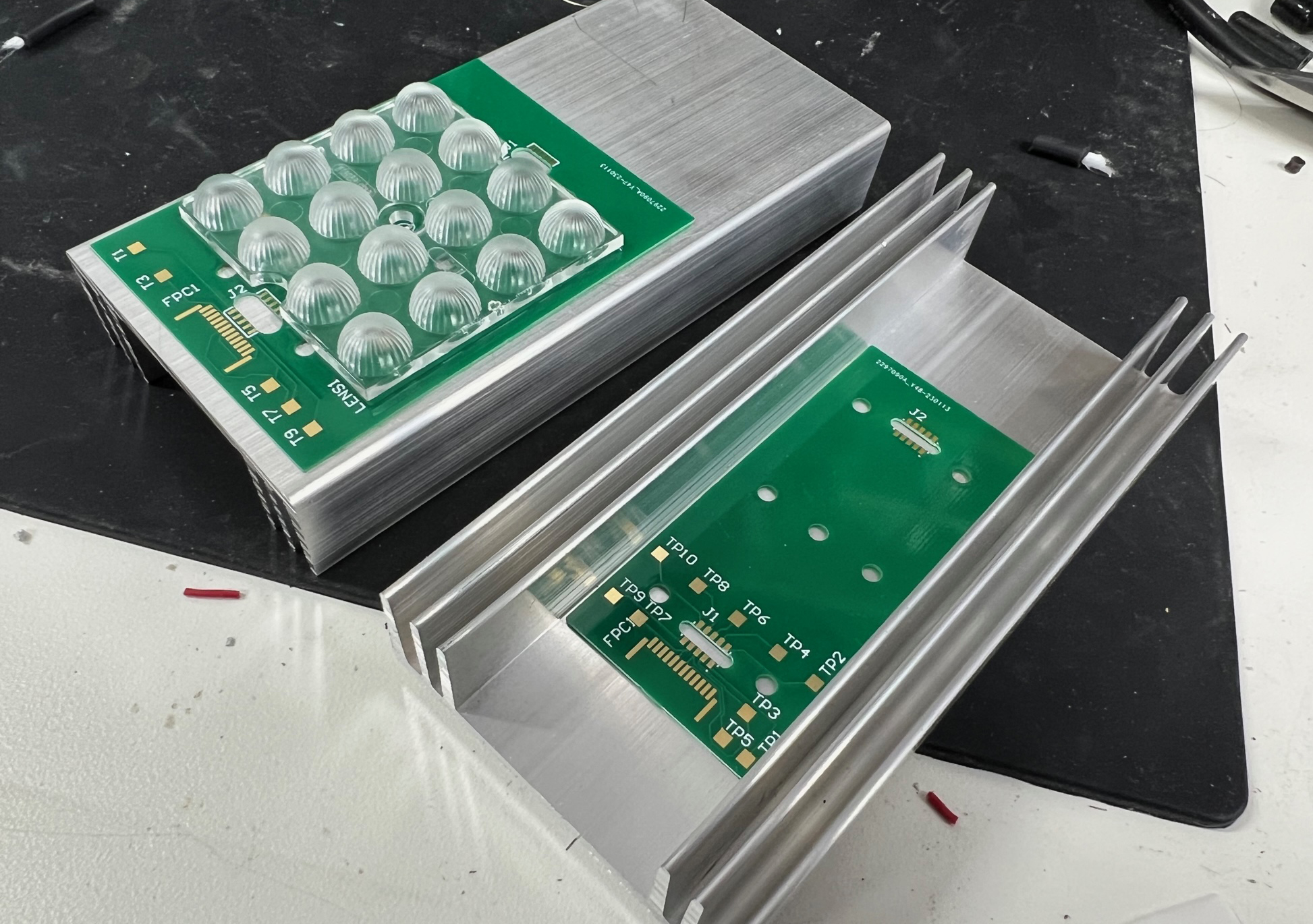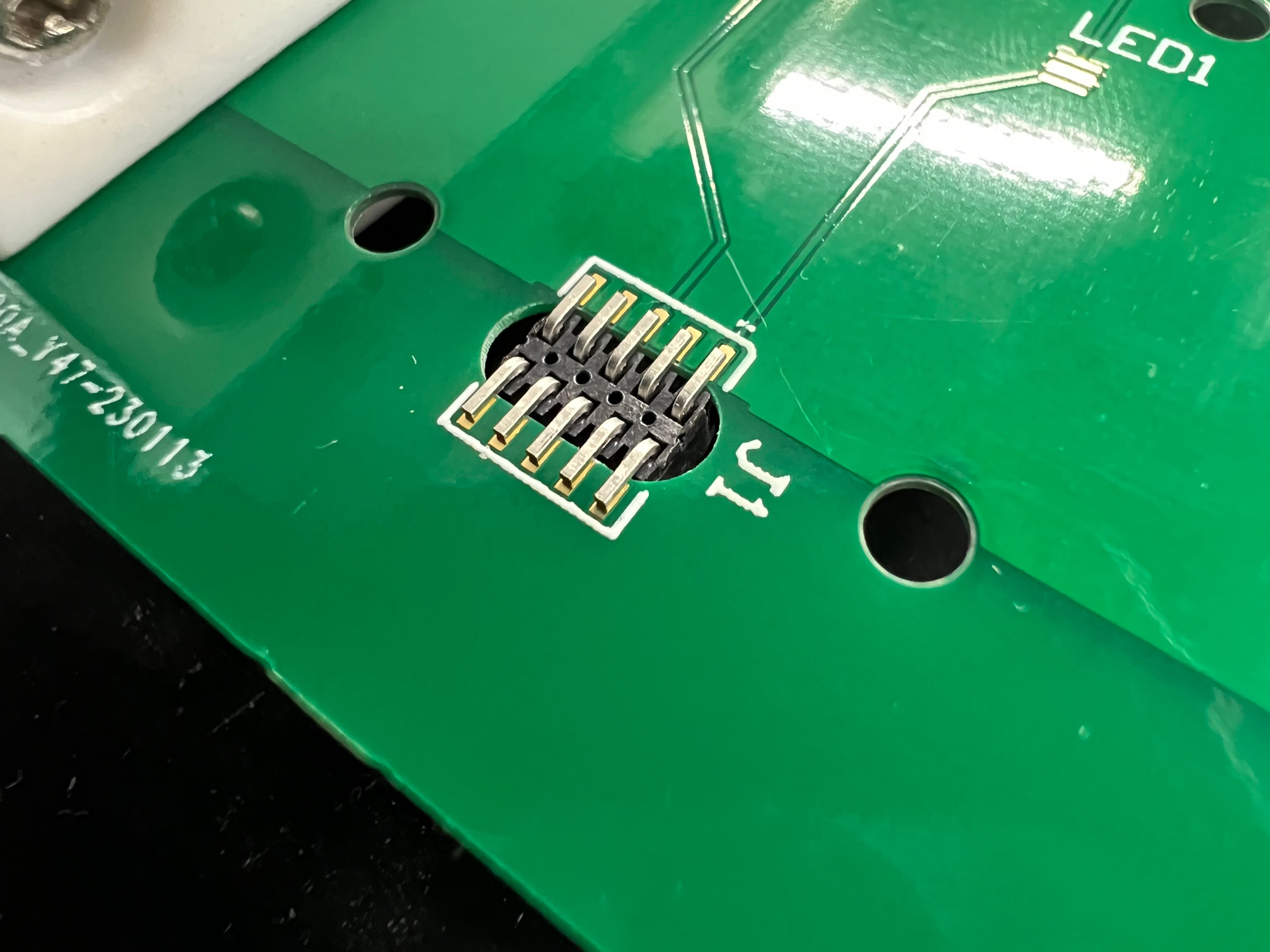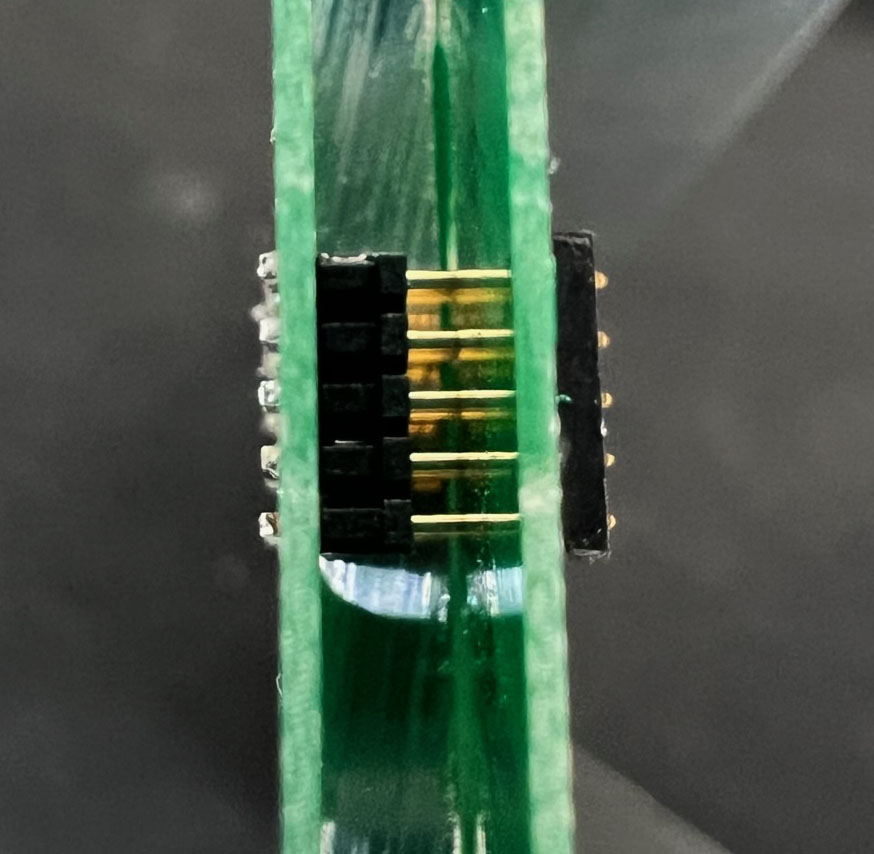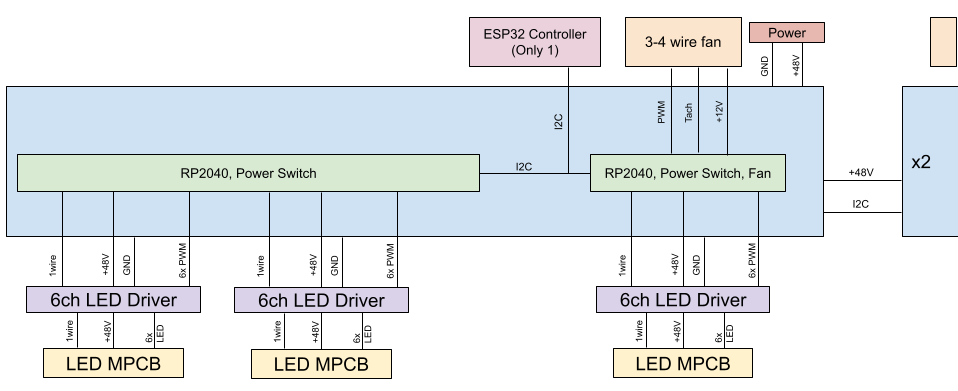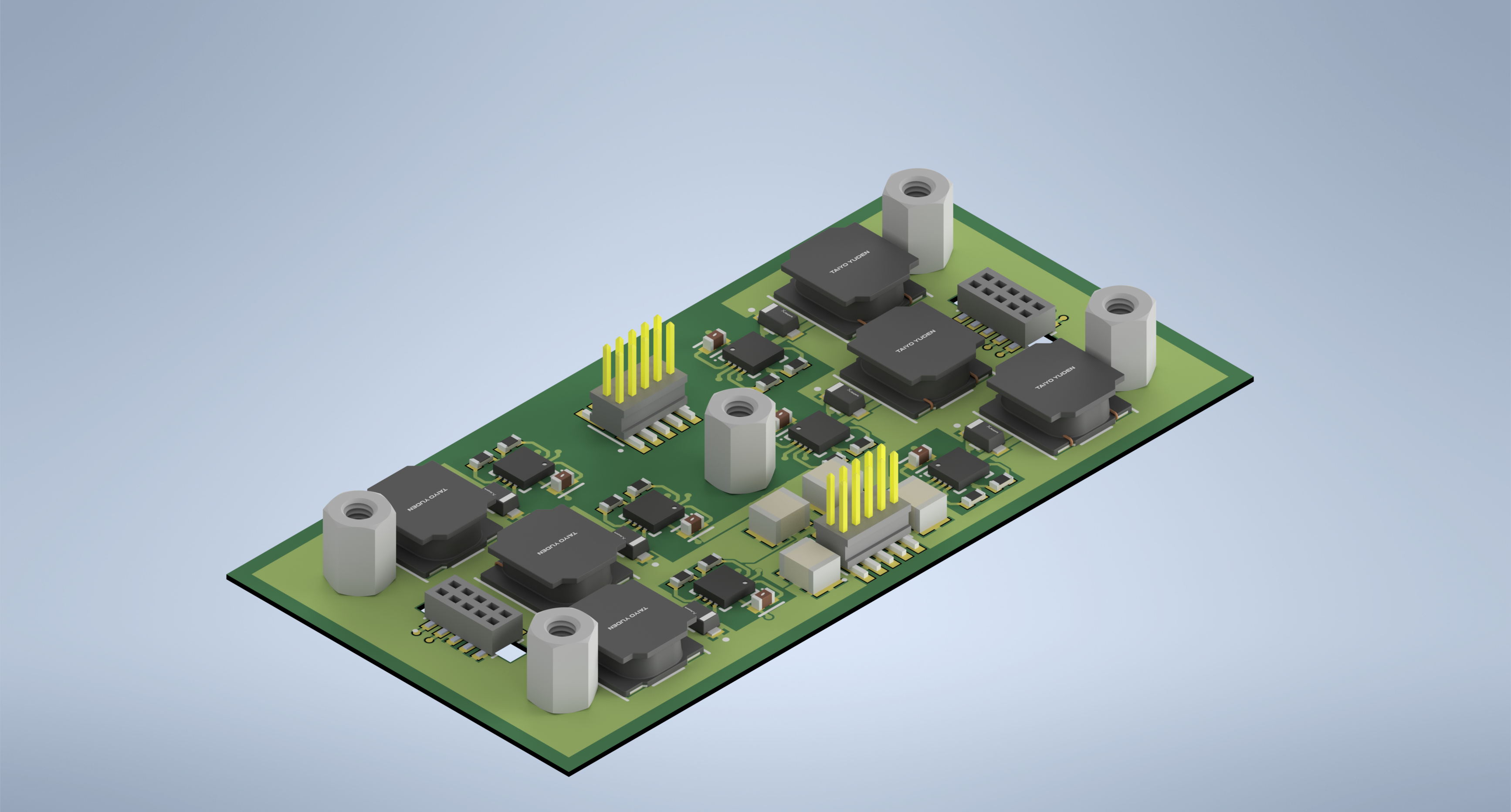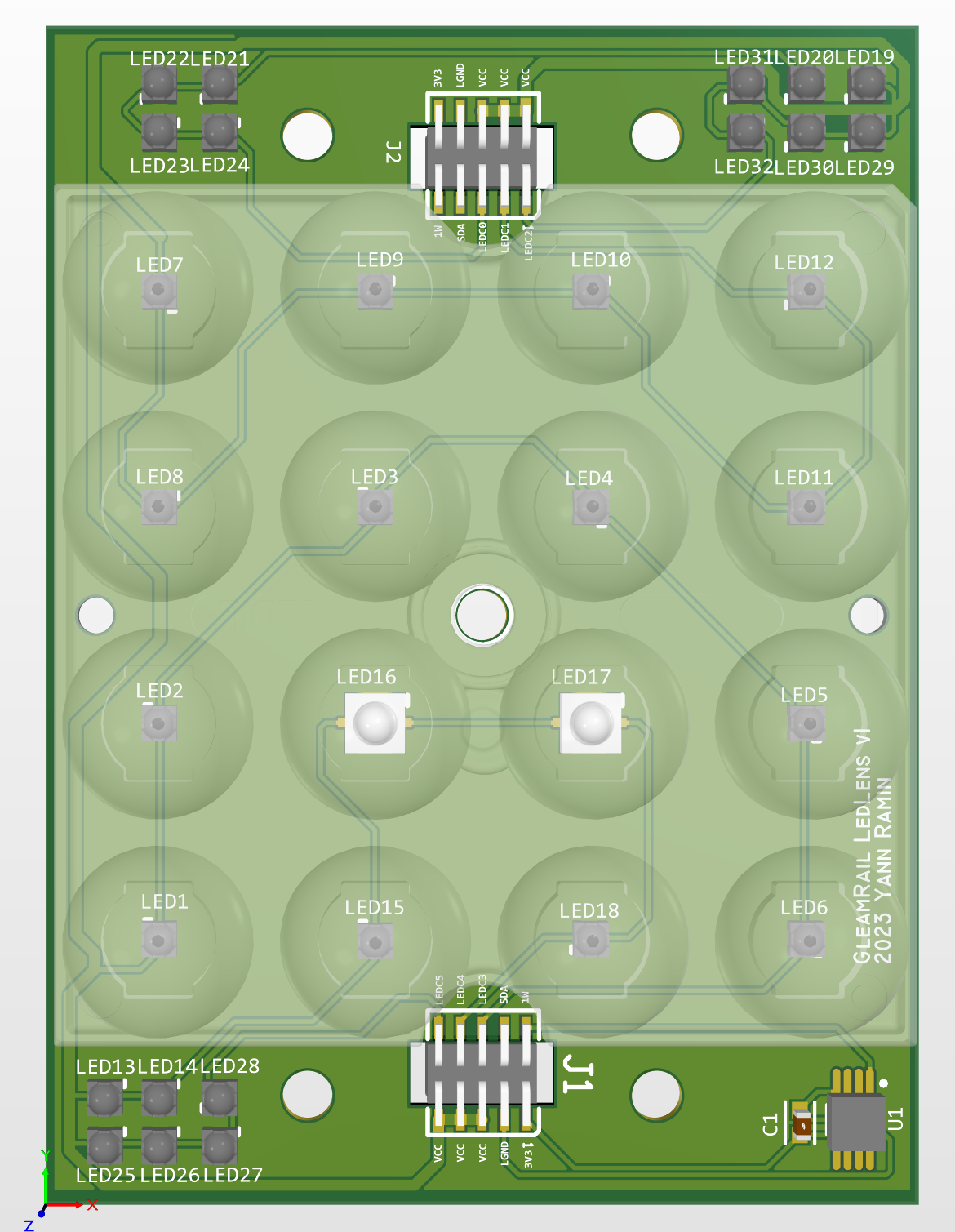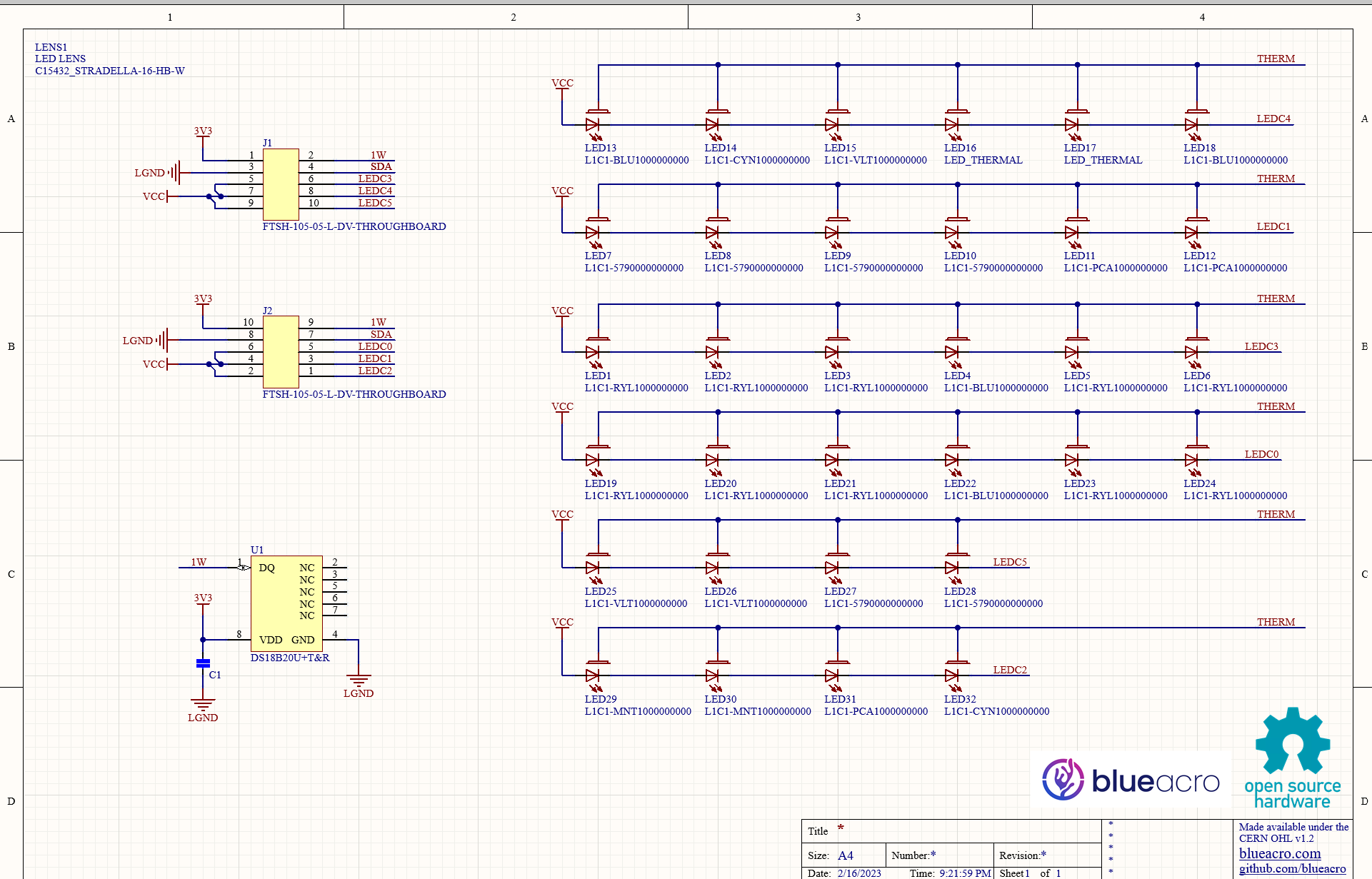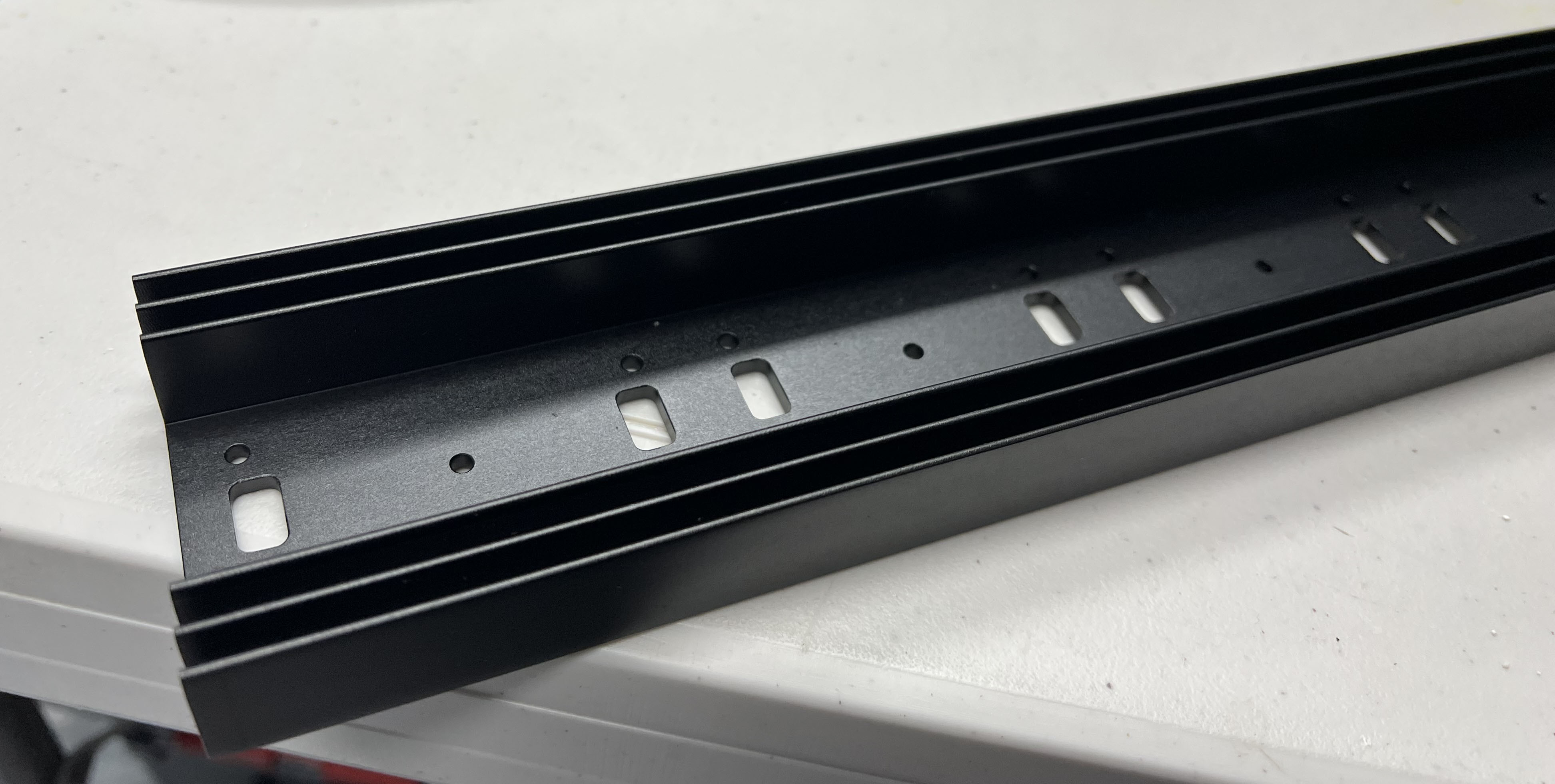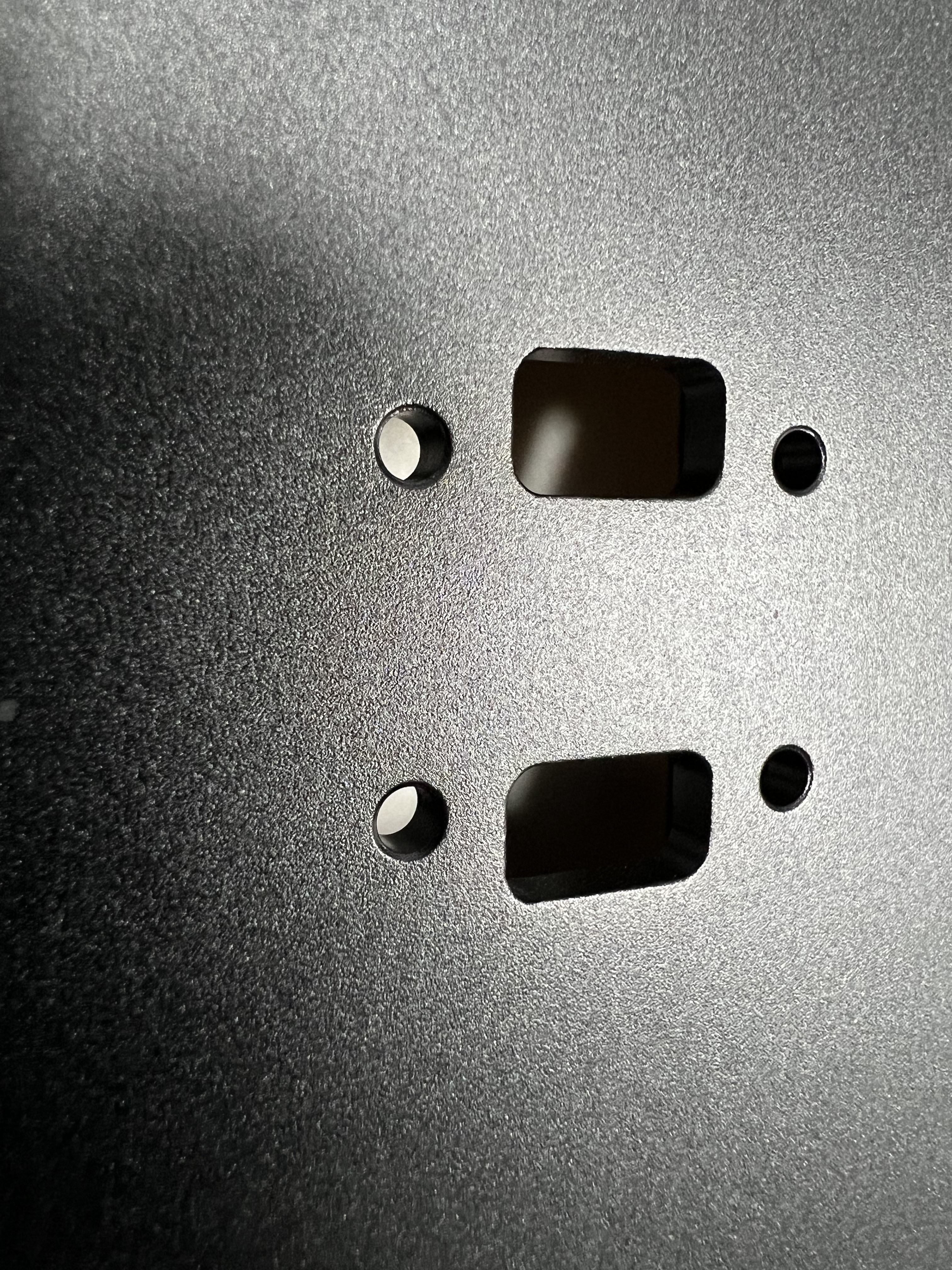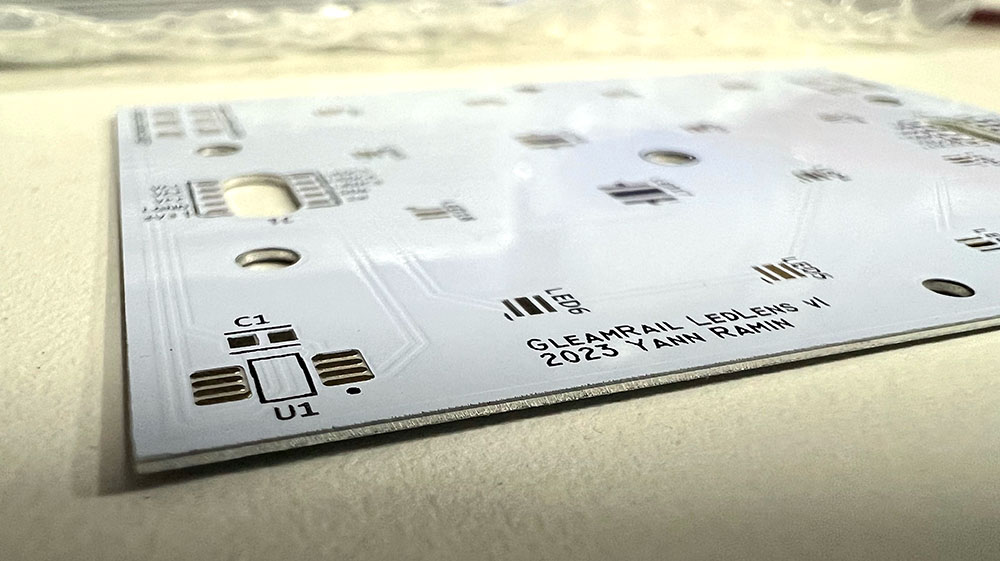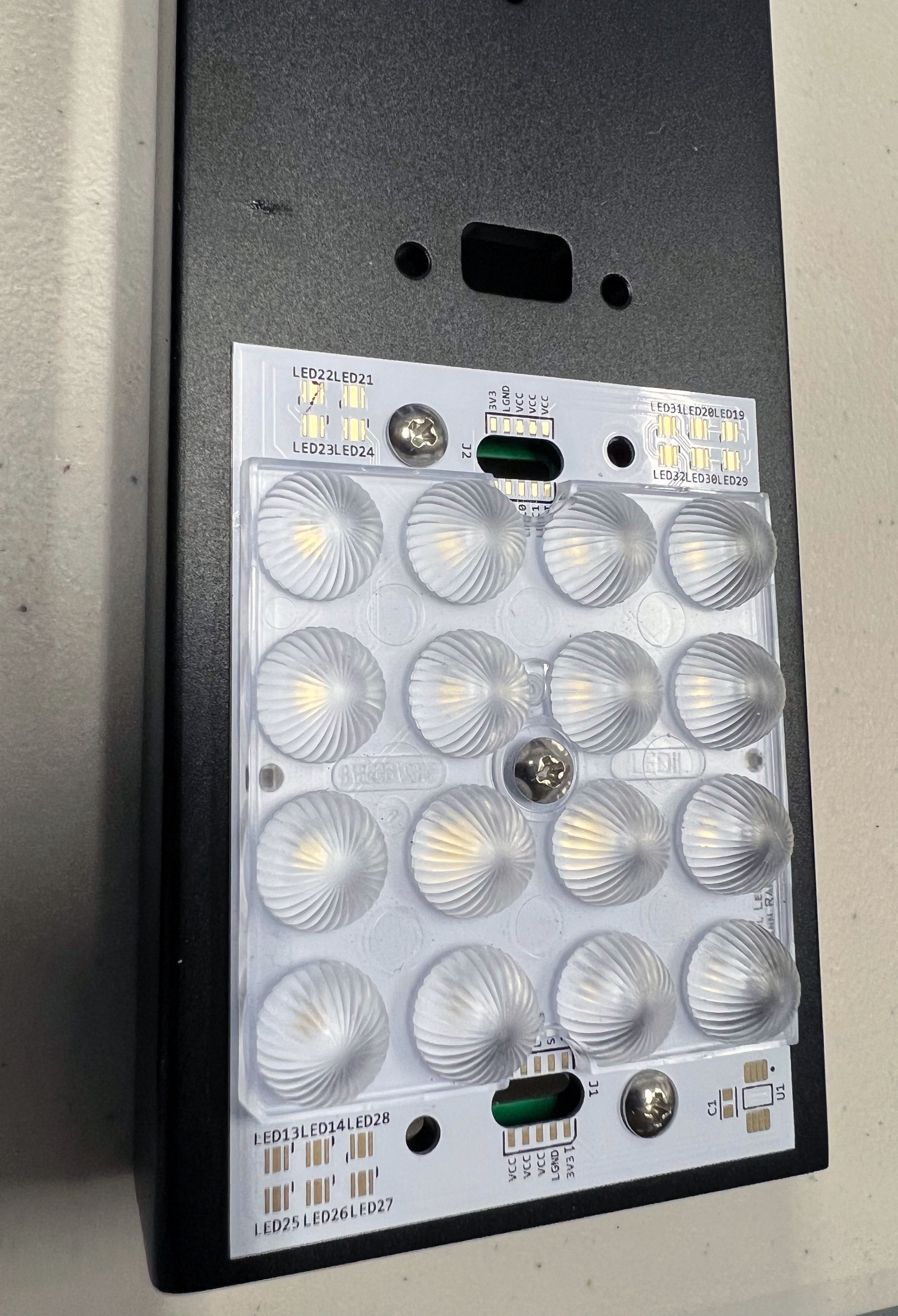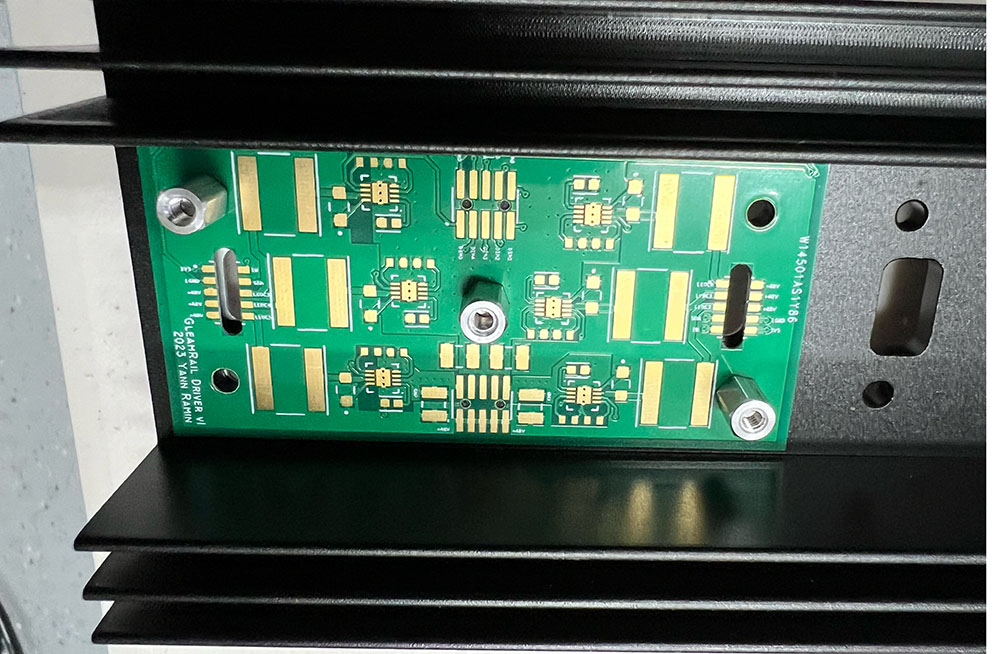Status: Heatsink with machining work (alternate) received. First driver/LED pair build and tested. PCB layout and design continues.
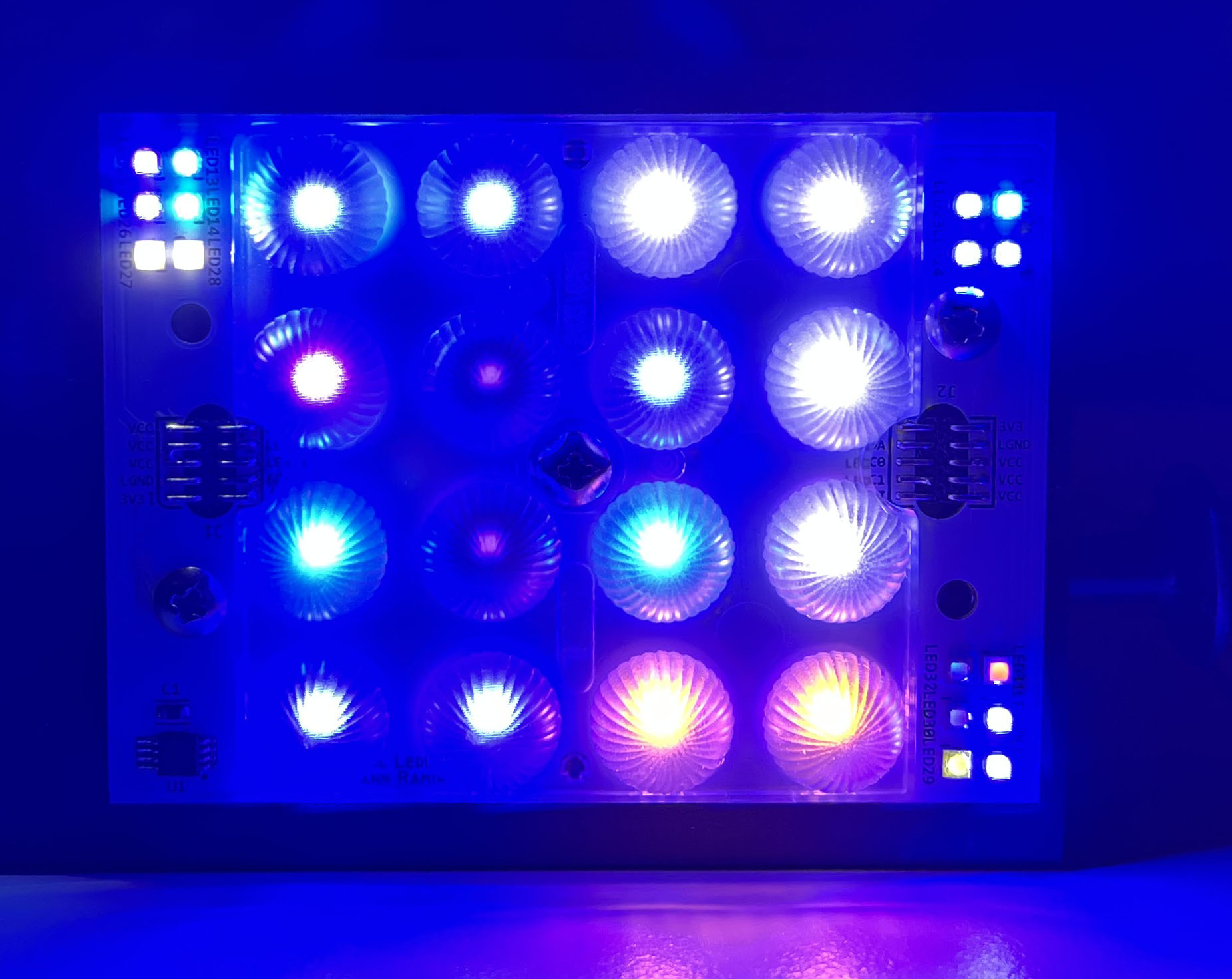
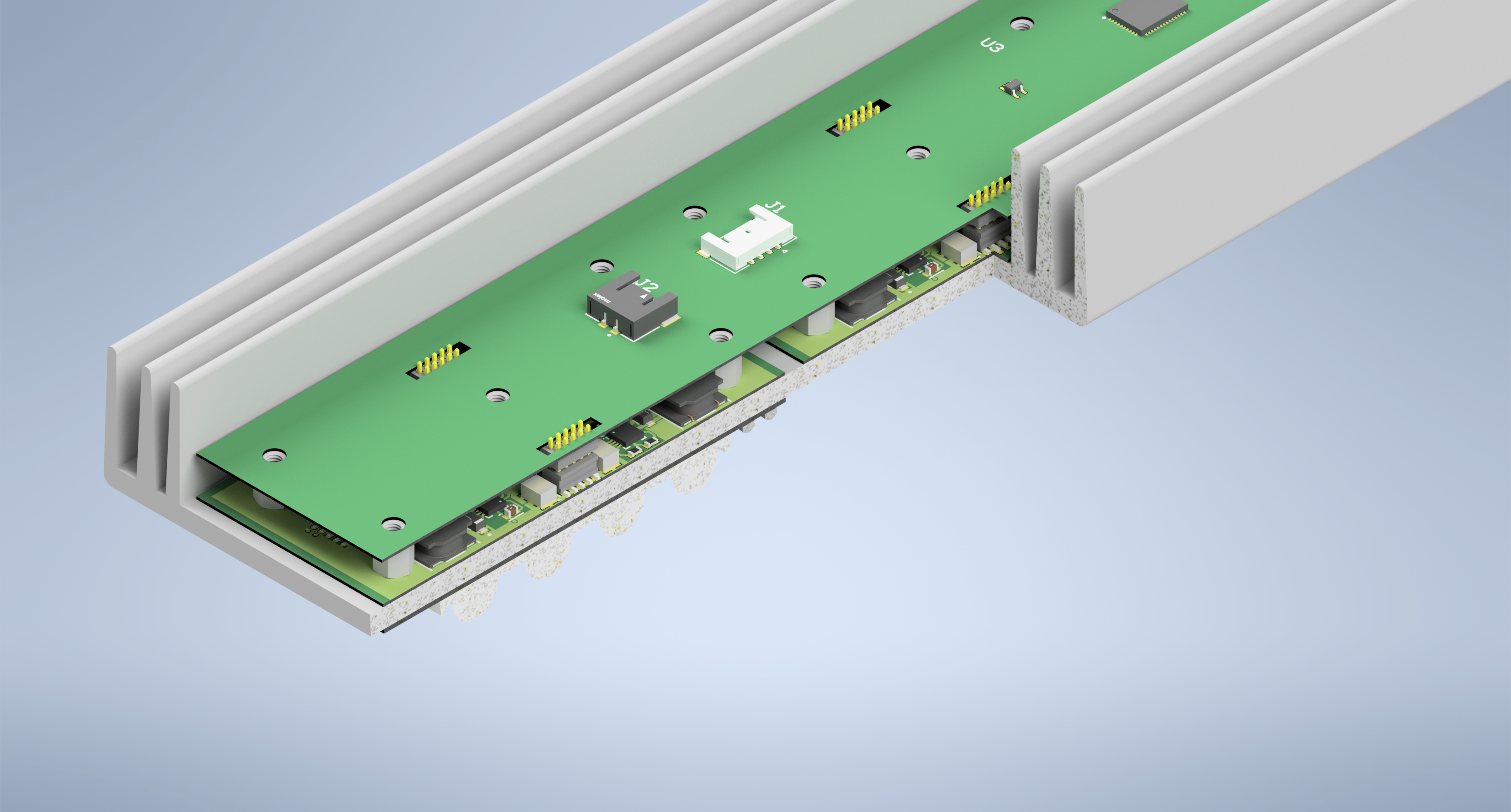
Hi everyone!
You may remember me from past threads including LEDBrick (LEDS! In Brick form! With no actual bricks!) and a few bad attempts at getting another reef aquarium started (Phoenix). Why not combine multiple projects in need of some refresh, and also try to knock out lighting for a new aquarium?
Introducing, the GleamRail. Concept art, without any shrouds, hardware, rails, etc below.
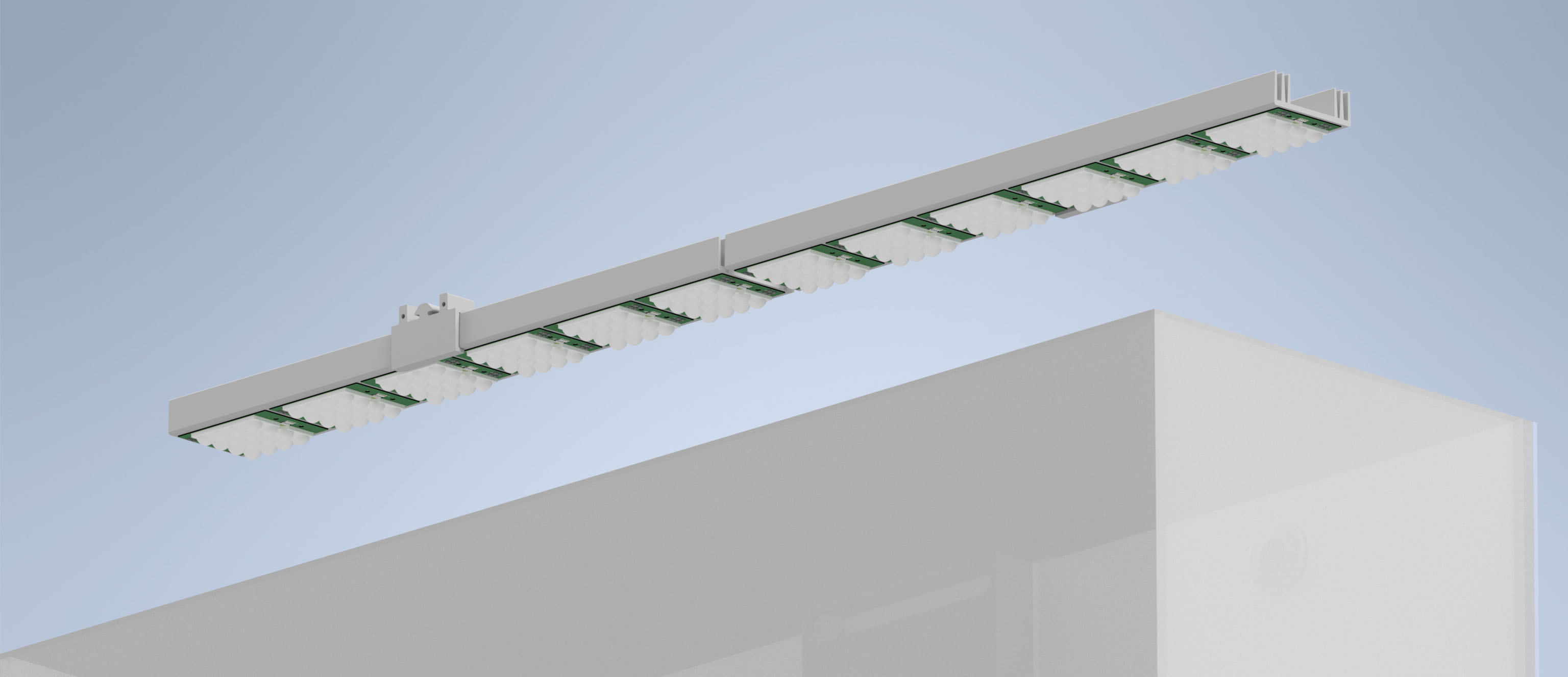
I wanted to try something different from just putting two pucks on top of the 22g long (36") tank, and also something different from just using a linear strips of lower power LEDs.
One of the challenges I've frequently had in my 90 gallon system with using four pucks is shadowing, and more importantly, shadows which stay in exactly one spot day in and day out. The very large colonies I've had (and then got wiped by a STN event, sigh) all exhibited lots of issues with one axis being the pretty one, and the rest atrophying away. Even adding T5 supplements (which I do), you lose a lot of the shimmer which actually is pleasing in a direct LED system. So, what would you do?
Option one is physically move the light source to mimic the sun actually arcing through the sky. However, I like things to be reliable, and putting some heavy LEDs on a linear sled, sitting above a wet evaporating box of salt water, and then reliably moving them back and forth day in and day out is about the least reliable thing I can think of. And this is the person who didn't seal any of the electronics in the LEDbrick and had to rescue them from moisture recently... maybe I too make terrible mistakes.
Option two is add _lots_ of LEDs, but only drive parts of them at nearly full power, effectively digitally fading the peak power across the linear strip as the day progresses. This means you need lots of high power LEDs (not super cheap) and the corresponding drivers or segmented power setup. You don't get as "fine grained" of a movement as physically moving the LEDs – its more digital than analog as light will only come from defined angles.
I'm building option 2 for the Gleam Rail concept. I've done a decent chunk of the modeling and pre-work to see if this is viable, so this post series will be build-log of sorts, going from some mock up and concepts, to design files, and actual building. Maybe I'll be done by mid-year (haha).
I'm going to leave some space for FAQs here, as well as links into the thread for future archaeologists.
Links
FAQ
How much will this cost?
Many dollars. I could probably buy a bunch of commercial fixtures for what this will cost end to end. Some of it is buying parts for replacements. Some of it will be wasted in approaches that don't work. Some of it will be spent in tooling I may literally never reuse, or could remotely justify the ROI on.
Will this fix all the coral shading problems and [ magical growth multiplier of acros ]?
No clue, nor am I building a control tank with the same flow, shape, corals, etc. This is not a controlled study, but at the very least I hope it doesn't make the problem worse. Maybe this is a solution in search of a problem. Doesn't matter. It'll look cool and grow coral.
Wouldn't the linear motion idea save money?
Probably would be cheaper. I'm putting 6x as many LEDs, drivers, and PWM signals into this. But then I won't have to listen to a motor or linear actuator ticking around all day long, or making concerning noises as the salt spray eats every mechanical part. Except fans. I'll be listening to them shredding their bearings about once a year .
Can you send me plans to build it and walk me through it? Can I buy one?
I'm happy to answer questions, take inspiration, and have discussions, but this isn't a design that’s going to be splashed together with some LDD drivers and an Arduino (though it could be with adaption! That however, is left as an exercise for the reader). Custom PCBs, machined heat sinks, 3d printed mechanics, and more. I'll be posting design files, firmware, notes, and so on, but realistically it is not your first-DIY-light project. I'm not interested in selling it, as I honestly don't think there is a market (been there, did LEDs for awhile).
Why?
Why not. This is fun.


Hi everyone!
You may remember me from past threads including LEDBrick (LEDS! In Brick form! With no actual bricks!) and a few bad attempts at getting another reef aquarium started (Phoenix). Why not combine multiple projects in need of some refresh, and also try to knock out lighting for a new aquarium?
Introducing, the GleamRail. Concept art, without any shrouds, hardware, rails, etc below.

I wanted to try something different from just putting two pucks on top of the 22g long (36") tank, and also something different from just using a linear strips of lower power LEDs.
One of the challenges I've frequently had in my 90 gallon system with using four pucks is shadowing, and more importantly, shadows which stay in exactly one spot day in and day out. The very large colonies I've had (and then got wiped by a STN event, sigh) all exhibited lots of issues with one axis being the pretty one, and the rest atrophying away. Even adding T5 supplements (which I do), you lose a lot of the shimmer which actually is pleasing in a direct LED system. So, what would you do?
Option one is physically move the light source to mimic the sun actually arcing through the sky. However, I like things to be reliable, and putting some heavy LEDs on a linear sled, sitting above a wet evaporating box of salt water, and then reliably moving them back and forth day in and day out is about the least reliable thing I can think of. And this is the person who didn't seal any of the electronics in the LEDbrick and had to rescue them from moisture recently... maybe I too make terrible mistakes.
Option two is add _lots_ of LEDs, but only drive parts of them at nearly full power, effectively digitally fading the peak power across the linear strip as the day progresses. This means you need lots of high power LEDs (not super cheap) and the corresponding drivers or segmented power setup. You don't get as "fine grained" of a movement as physically moving the LEDs – its more digital than analog as light will only come from defined angles.
I'm building option 2 for the Gleam Rail concept. I've done a decent chunk of the modeling and pre-work to see if this is viable, so this post series will be build-log of sorts, going from some mock up and concepts, to design files, and actual building. Maybe I'll be done by mid-year (haha).
I'm going to leave some space for FAQs here, as well as links into the thread for future archaeologists.
Links
- LEDBrick – the prior project, open hardware
- Phoenix Aquarium – the first target build thread using these LEDs
FAQ
How much will this cost?
Many dollars. I could probably buy a bunch of commercial fixtures for what this will cost end to end. Some of it is buying parts for replacements. Some of it will be wasted in approaches that don't work. Some of it will be spent in tooling I may literally never reuse, or could remotely justify the ROI on.
Will this fix all the coral shading problems and [ magical growth multiplier of acros ]?
No clue, nor am I building a control tank with the same flow, shape, corals, etc. This is not a controlled study, but at the very least I hope it doesn't make the problem worse. Maybe this is a solution in search of a problem. Doesn't matter. It'll look cool and grow coral.
Wouldn't the linear motion idea save money?
Probably would be cheaper. I'm putting 6x as many LEDs, drivers, and PWM signals into this. But then I won't have to listen to a motor or linear actuator ticking around all day long, or making concerning noises as the salt spray eats every mechanical part. Except fans. I'll be listening to them shredding their bearings about once a year .
Can you send me plans to build it and walk me through it? Can I buy one?
I'm happy to answer questions, take inspiration, and have discussions, but this isn't a design that’s going to be splashed together with some LDD drivers and an Arduino (though it could be with adaption! That however, is left as an exercise for the reader). Custom PCBs, machined heat sinks, 3d printed mechanics, and more. I'll be posting design files, firmware, notes, and so on, but realistically it is not your first-DIY-light project. I'm not interested in selling it, as I honestly don't think there is a market (been there, did LEDs for awhile).
Why?
Why not. This is fun.
Last edited:





